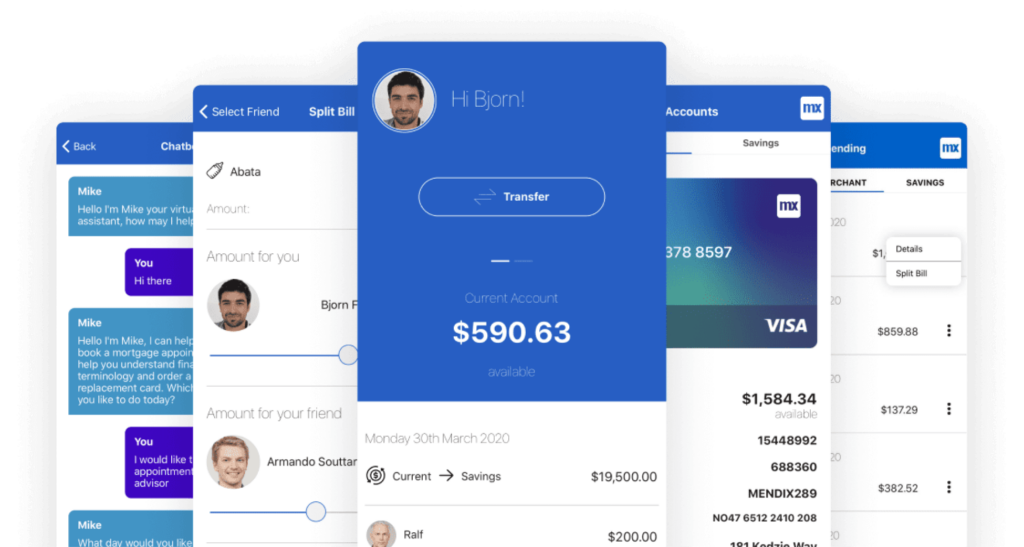Key features to look for in a low-code platform for legacy app modernisation: A Detailed Guide

For decades, legacy applications have been the powerhouse of organisations. These applications have helped enterprises enable various business processes and operations, ensuring significant milestones and driving growth. However, legacy systems have passed their prime and started to pose operational bottlenecks.
As a result, enterprises seek advanced solutions to meet evolving business needs and accelerate digital transformation. That’s when a low code platform comes into play as a solution.
A low-code application development platform enables enterprises to build custom apps from scratch or completely replace legacy systems without the need for extensive coding. Transforming outdated systems using low code can be a shortcut, but how do you choose the right low-code platform?
It starts with knowing the key features that make each option unique. In this blog, we’ll explore the features and discuss how low code can simplify legacy app modernisation.
What is a Legacy Application?
Legacy applications are software systems that an organisation has used for a longer period to run its day-to-day operations. These applications become obsolete, making it difficult for businesses to remain agile, which leads to
- Manage higher workloads
- Outdated security frameworks
- Lack of flexibility
Though people still regard legacy applications as hidden gems in today’s business landscape. It is because the capabilities, crucial data and functionality found in legacy applications can be difficult to find in modern systems.
Why Should You Modernise Legacy Applications?
Businesses often struggle to upgrade legacy systems for months or even years. Over time, maintaining legacy applications becomes increasingly challenging, leading to increased costs.
The accumulation of defects has a significant impact on business processes, employee engagement, and the company’s ability to comply with business goals and modern standards. This highlights the organisations undertaking legacy application modernisation.
To make the modernisation process easier, it’s advisable to consider a low code application development platform, which can simplify development, integration, and cost savings.
Low Code Platforms And How It Helps With Modernizing Legacy Application
Modernising legacy applications includes upgrading, building, or transforming them to match current technology and business goals. This allows these applications to run on contemporary platforms updated with effective functionality and security measures.
Legacy app modernisation has historically demanded significant effort and costs. In contrast, low code platforms are a whole new ballgame, simplifying the resources and the process of modernising old applications. Reducing downtime and improving the onboarding process are the main reasons legacy apps should be modernised.
Low code technology is ideal for
- Users who doesnt have coding experience,
- Developers aim to expedite the app development process.
- Enterprises seeking to embrace user experience and digital transformation.
Benefits of Choosing Low Code App Development Platform For Modernising Legacy Applications
Low-code platforms streamline the modernization of legacy applications by reducing total cost of ownership (TCO) and building multi-experience applications that enhance user satisfaction.
Key Benefits includes:
- Faster Development: With the right innovation, anything can be built in minimal days or months, including low code solutions. With its drag-and-drop capabilities, prebuilt libraries, and reuse of application modules, it allows enterprises to upgrade, create, and deploy legacy applications swiftly.
- Modern Process Optimisation: Low code platform helps enterprises expedite workflows and automate recurring tasks. Citizen developers can modernise legacy apps by leveraging low code app building solutions to create apps, build APIs, integrate business systems, and foster overall productivity and efficiency.
- Agility for Businesses: A low-code application platform enables organisations to quickly adapt to changing economic conditions. It allows users to build applications with minimal to no coding using a graphical user interface, rationalising business processes and workflows, helping them stay agile.
- Minimise risk: Leveraging low code to modernise legacy apps will help enterprises reduce operational disruptions, enhance system reliability, optimise compliance processes and guarantee smoother data migrations.
Features to look for in low code platform to modernise legacy applications
Upgrading legacy apps is key to maintaining flexibility and growth as digital trends rapidly shift. Low-code platforms streamline and accelerate the entire application development process by automating key stages.
However, it is essential to choose the right low-code app development platforms based on the features that match your organisation’s goals and technology needs.
Let’s break down the features of low code platforms.
1. Visual Modeling
The first and crucial feature of a low code development platform is visual modeling. The drag-and-drop feature and intuitive interface empower users to build all types of applications and increase productivity.
Users can design applications using visual flowcharts, which makes it easier for developers and stakeholders instead of extensive coding. This approach is primarily useful for modernising legacy applications, making it easier to upgrade outdated systems.
Benefits:
- Modernise systems without high costs.
- Allows non-technical teams to help with app development.
- Leveraging existing developers to rapidly modernise legacy applications
- Enhances system performance and user experience
2. Data Integration
Low code app development platform allows the integration of data from multiple sources and systems, including legacy systems. By using simplified low code tools, data integration with legacy systems, databases, and APIs is easier, enhancing the functionality of existing applications.
Benefits:
- Ensuring a smooth transition of legacy applications with modern systems
- Develop and oversee systems on a broader scale.
- Easily locate and share information across various projects and teams.
- Accelerate the development of reusable components for easier access to organisational data.
3. Reusable Components
With low code’s pre-built templates, modules, logic, connectors, and more, enterprises can build cross-platform applications. Developers can customise the application by adapting to the changing needs of users and devices. It streamlines application deployment and ensures a consistent user experience, enhancing accessibility and satisfaction.
Benefits:
- Leveraging pre-configured modules to enhance the efficiency of legacy systems.
- Build applications that maintain uniformity and easily scale for future business needs.
- Quickly adapt the functionalities of legacy applications to align with current technological demands.
- Rely on pre-tested components for app performance and security standards.
4. Collaboration tools
Build applications with built-in tools that enable rapid iterations, revision tracking, testing and more. In contrast to conventional coding techniques, customisation options facilitate swift feature updates and encourage the employees to be on the same page.
Benefits:
- Simplify the development process to minimise redundancy
- Encourage improved communication across the organisation
- Enhance project efficiency by aligning goals and resources.
- Eliminate silos to strengthen collaboration between business and IT teams
5. Scalable Environments
Low-code platforms are cloud-enabled, allowing for efficient application onboarding, runtime support, and minimal downtime. These platforms also allow enterprises to build scalable applications and adapt to evolving customer expectations and business necessities.
Benefits:
- Create scalable, maintainable solutions on cloud-native architecture.
- Enable rapid adjustments when needed.
- Provide ongoing enhancements for users through engaging web, mobile, or immersive experiences.
6. Application lifecycle management
From ideation to deployment, a low code platform eases the process of building apps at every stage of development. Low code platforms simplify project management, requirements gathering, version control, testing, and deployment, ensuring minimal defects.
These platforms also use Agile methods and DevOps tools to improve efficiency and collaboration throughout the process, as well as maintain consistency throughout the application’s lifecycle.
Benefits:
- Foster better communication among cross-functional teams, leading to quicker decision-making and problem-solving.
- Reduces development costs by minimising resources and accelerating time to market.
- Integrates built-in governance and security features to guarantee that applications comply with standards from the outset.
Squareone: Your Go To Low-Code Solution Provider for LegacyApplication Modernisation
SquareOne, a leading digital transformation company in the Middle East, accelerates many future innovations, including low code app development.
With seasoned experience in low code platforms, SquareOne helps create and launch custom applications designed to fit each business’s unique needs through
Low code platform offered by SquareOne:
1. Microsoft Power Apps
Power Apps is a low-code app development platform that allows enterprises to develop apps quickly with minimal coding and drag-and-drop features. It is equipped with AI capabilities, offering built-in visuals, reports, and analytics, smoothing the app-building process and facilitating easy integration with existing systems.
2. Mendix
Mendix’s low-code platform is cloud-native and allows businesses to build, upgrade, or replace systems with custom, scalable apps. It also has a drag-and-drop feature and an AI chatbot to create personalised apps for developers and stakeholders to enhance user experience and collaboration.
Conclusion
Modernising legacy applications is not a one-time task; it is an ongoing journey for enterprises striving to remain agile in the fast-paced digital landscape. Low code app development solutions offer an efficient path to legacy application modernisation.
With advanced low code platforms, businesses can stay agile, automate operations, enhance innovation, and eliminate the inefficiency caused by outdated processes.
At SquareOne, the experts empower enterprises to modernise legacy applications for long-term adaptability, ensuring they evolve with future business needs.
Curious about how app modernisation can propel your business? Connect with our experts at SquareOne today to digitally transform your vision into reality.
FAQs
Low code development is a technology that uses minimal coding or no coding to build personalised applications and processes. Low code platform development enables users to create applications even without extensive coding knowledge in a minimal time period to reduce the onboarding time and launch the app in the market.
Legacy systems often struggle with rigidity and are unable to keep pace with evolving workloads and contemporary applications. In contrast, modern and cloud-based solutions provide the flexibility and scalability necessary for organisations to effortlessly adjust resources and respond to dynamic business demands.
The 7R’s of modernisation are
- Retain: Preserving the existing system by encapsulating modern application features without big changes. This approach also supports integrating new tools and technologies.
- Rehost: Moving the application to modern platforms such as cloud, physical and virtual without altering the code or its functions. This deployment offers scaleability support.
- Replatform: This approach involves upgrading the application with the required technology changes to make it run smoothly.
- Refactor: Optimise the existing code or rewrite certain components of the system without affecting how it works, making it easier to maintain and update.
- Rearchitect: Transferring the application’s overall structure to the new application architecture will improve system flexibility and integration. This approach fixes limitations and makes the application work with modern technologies.
- Rebuild: Completely recreate the application from scratch by retaining its actual functionality but with modern technology.
- Replace: Substitute the legacy systems with a new one, whether it’s a custom-built or on-shelf solution. This is ideal when starting fresh with modern capabilities, features and requirements.
Updating or transforming outdated legacy applications with modern features and technologies to meet future requirements allows enterprises to stay ahead of the curve.
Low code no code platforms simplify the process of modernising applications by allowing users to design, develop, and deploy updates with minimal coding.
These platforms enable users to create applications and automate business processes through visual and user-friendly interfaces, eliminating the need for extensive closing for rapid app development.
Low-code platforms are highly sought after because they speed up application development and help bridge the industry’s skills gap. More businesses are turning to low-code solutions to rationalize their processes and quickly deliver applications that meet evolving market needs.














